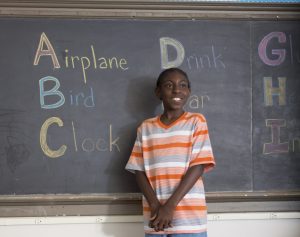Six months after the civil unrest in Baltimore City, residents are still trying to make sense of what happened. Moving forward, many have turned their attention to the city’s future, hoping to create a bright one for its citizens — particularly, its youth. This is important, especially in a time such as this when Baltimore’s children have witnessed events that can make a promising future seem hopeless.
 Johns Hopkins students Siddhi Sundar and Adil Qureshi know what it means to work with children who are struggling to be optimistic about their futures. They spent the last year and a half working with children in Mumbai, India, specifically spending time in some of the poorest slums. There, they identified at-risk youth, and then surveyed them using tests to gauge specific well-being metrics, such as resilience, optimism, grit, empathy, mindfulness, and purpose.
Johns Hopkins students Siddhi Sundar and Adil Qureshi know what it means to work with children who are struggling to be optimistic about their futures. They spent the last year and a half working with children in Mumbai, India, specifically spending time in some of the poorest slums. There, they identified at-risk youth, and then surveyed them using tests to gauge specific well-being metrics, such as resilience, optimism, grit, empathy, mindfulness, and purpose.
What they found from these surveys was that these youth “were at risk for significant mental health issues in the future if nothing was done,” says Sundar. To combat this, the next few months were spent implementing exercises to boost these youths’ confidence, resilience, and sense of meaning and purpose in life. And at the end of Sundar and Qureshi’s work, not only were the metrics encouraging, but so were the smiles of the children.
Now, Sundar and Qureshi are moving their efforts from Mumbai to Baltimore, hoping to bring the same benefit to the children here. Their curriculum is called “The Hero Lab” and their aim is to use this program to enact positive psychology and resilience training in at-risk youth in Baltimore City.
Since coming to Johns Hopkins in the summer, Sundar and Qureshi have spent much of their time partnering with local urban schools in low-income neighborhoods. Further, they have partnered with Medicine for the Greater Good (MGG), a medical-community initiative at Johns Hopkins Bayview, to help grow their resources and better understand the social determinants of health impacting the City, while also receiving insights about the communities they are serving.
Thus far, their work has been encouraging. They have reached out to a dozen schools and have introduced The Hero Lab project to hundreds of students. Every week, more emails come in from schools requesting implementation of the curriculum, and Sundar and Qureshi are happy to oblige. Future steps will continue to build on this energy and success, and new partnerships with other organizations in the city will help foster more creative interventions for the curriculum to explore.
Community health initiatives may hold the key to helping Baltimore City get back on its feet. Because of the work of people like Sundar and Qureshi residents can once again begin to imagine a hopeful future.